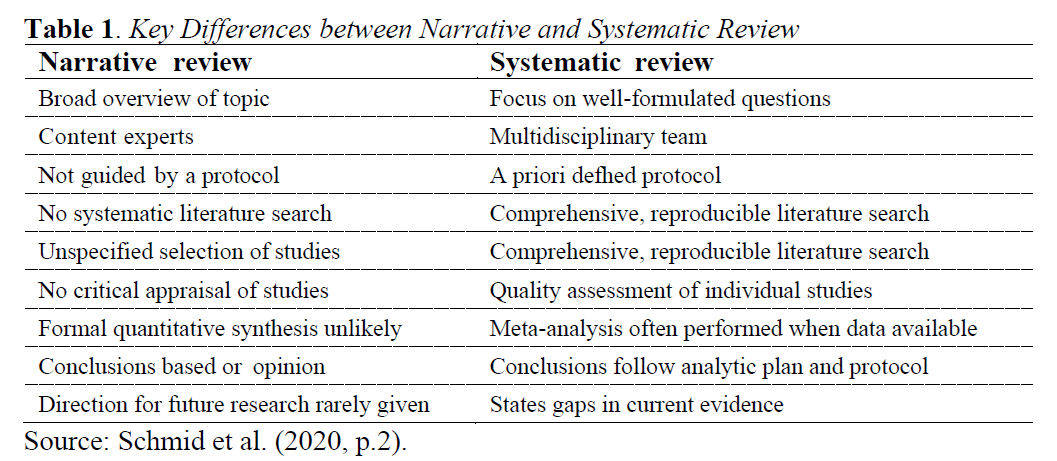Information

This assessment can be carried out using various approaches, such as the medicine case and the JBI (Joanna Bridge Institute) checklist. However, depending on the concrete objectives of the studies in question, this assessment is optional for some systematic literature reviews.
Systematic reviews employ a rigorous, scientific approach to thoroughly search for and assess all evidence using established and predetermined analytical methods (Committee on Standards, 2011). A systematic review involves a methodical literature search to consolidate information from various studies using a specific protocol to address a focused research question. The process aims to locate and utilize all accessible published and unpublished evidence, meticulously evaluate it, and present an objective summary to formulate sound recommendations. The synthesis can be qualitative or quantitative, but its defining characteristic is adherence to guidelines that allow for reproducibility. The widespread adoption of systematic reviews has transformed the evaluation of practices and how practitioners acquire information about which interventions to employ. Table 1 outlines some critical distinctions between narrative and systematic reviews.

The concept of the modern systematic review can be traced back to a 1976 paper by Gene Glass in psychology. In this paper, Glass provided a quantitative summary of all the studies that evaluated the effectiveness of psychotherapy (Glass, 1976). He also introduced the term "meta-analysis" in educational psychology to describe the statistical analysis of an extensive collection of results from individual studies in order to integrate the findings (Cheung, 2015, p. 44). Today, systematic reviews are widely used across various scientific disciplines. In healthcare, however, "meta-analysis" primarily refers to quantitative data analysis from a systematic review. This means that systematic reviews without a quantitative analysis in healthcare are not typically labelled as meta-analyses, although this distinction still needs to be firmly established in other fields. We will maintain these distinct terms, using "meta-analysis" to denote the statistical analysis of data collected in a systematic review.
Systematic reviews generally involve six significant components: topic preparation, literature search, study screening, data extraction, analysis, and report preparation (Schmid et al., 2020). Each involves multiple steps, and a well-conducted review should carefully attend to all of them (Fig. 2.).
